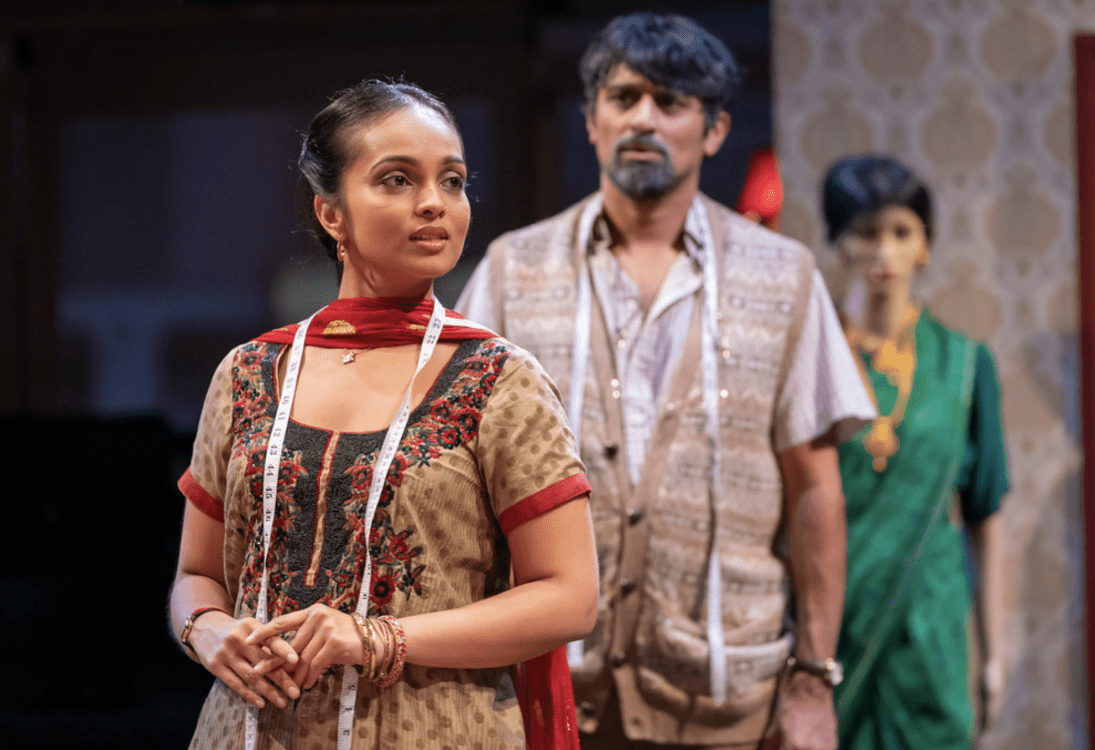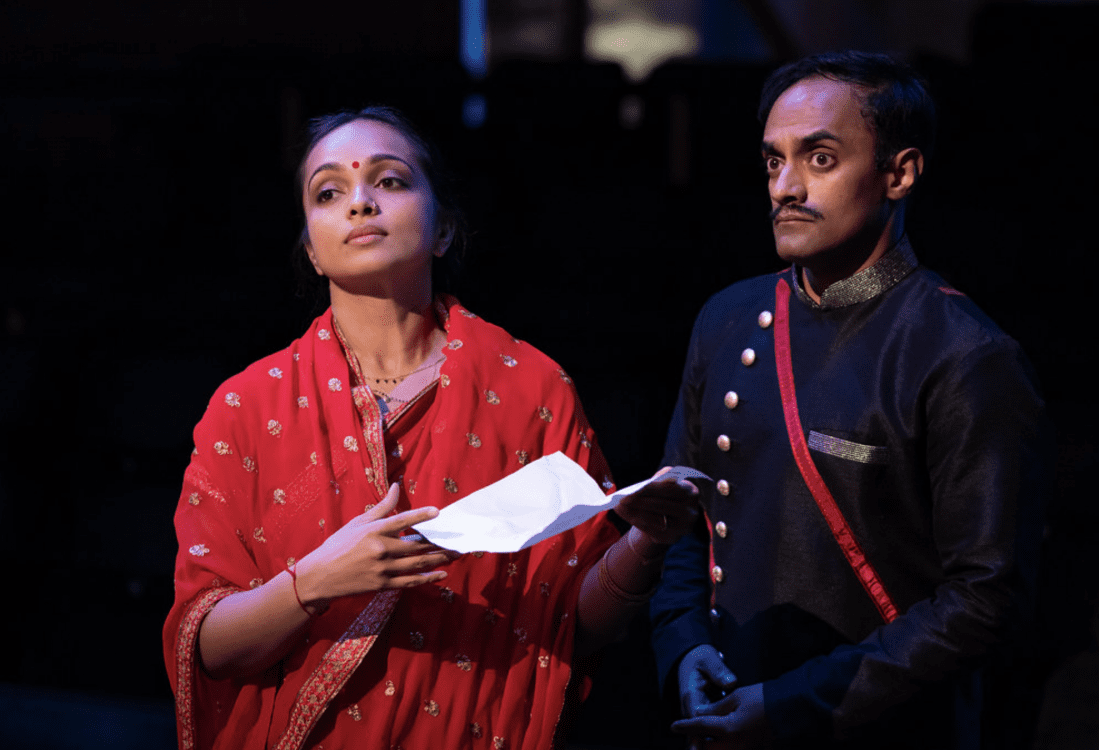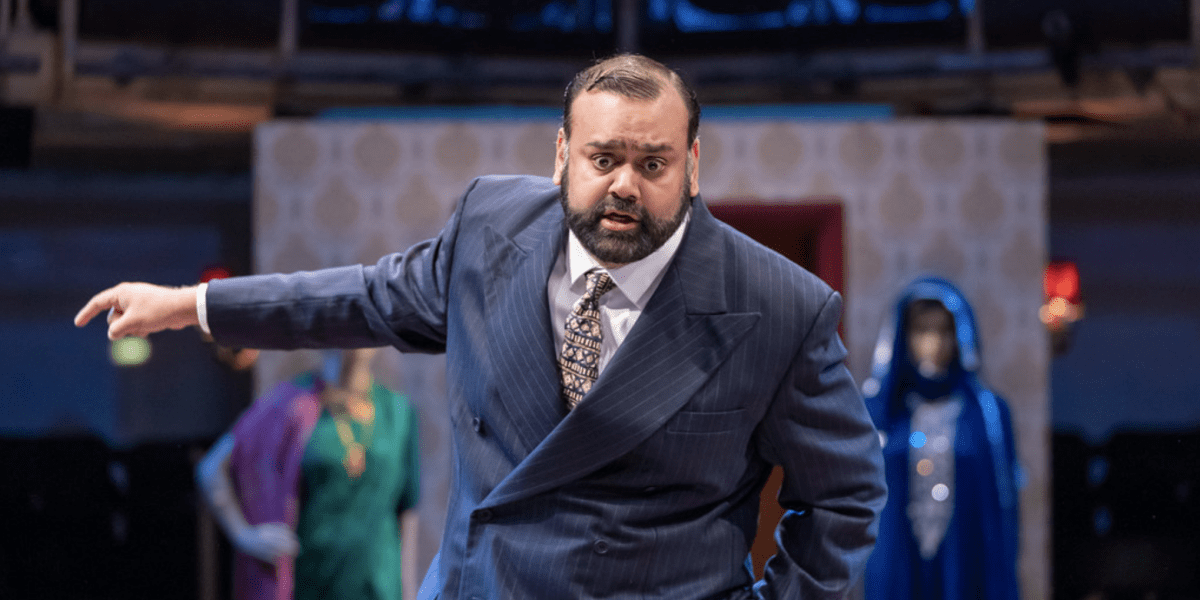With a witty script wonderfully executed by an almost infallible cast, Tanika Gupta’s adaptation of Hobson’s Choice is a fantastic watch. She has transformed the 1880s Hobson clan, of Harold Brighouse’s original, into a 1980s family of first generation Ugandan-Asian refugees, and the setting has shifted across the river from a shoemakers in Salford to a tailors in Ancoats.

Whilst Gupta’s script stays faithful to the rise and fall of Henry (now Hari) Hobson at the hands of his three daughters, it doesn’t feel in any way tied down to that which it was adapted from. The sheer joy of the performance comes instead from the intricate dialogue and wordplay. An incredibly talented cast brought life to what so easily could’ve been throwaway lines, but instead had the audience in stitches. Particularly in Tony Jayawardena’s portrayal of the patriarchal Hari, there were times when the comedy flowed so naturally it seemed improvised, and yet was so perfectly polished and seamlessly woven into the character that it surely couldn’t have been.
There is politics at the play’s centre (both metaphorically and physically – a large painting of Ted Heath hangs above the centre of the stage throughout), and you don’t have to jump too far to draw comparisons between this mid-eighties uprising of a more liberal younger generation and the politics surrounding us today. Conversations about Hari’s love of Thatcher and disdain for Foot (“I am no communist!”) could’ve so easily been lifted from any number of modern family tiffs. What this isn’t, however, is a political play. It’s a comedy at heart, where everything that can be played for laughs is done so and to great effect. Jayawardena’s Hari was able to launch into xenophobic, sexist and political tirades whilst keeping every single audience member subdued in hysterics. Whether it be the opinionated Hari, or the Machiavellian Durga (Shalini Peiris), the play’s sense of humour means all these characters are able to be truly horrible to one and other, at no risk to the affection the audience has for them.
A quirky modern box set inside the grand Edwardian exterior of its name, the Royal Exchange itself is as apt a metaphor for this adaptation as any other. The stage in the round was given the grounding of a door attached to a corridor protruding from one of the 8 exits – giving the performance more of a ‘super-thrust’ stage. In all honesty I had planned to be snarky about this mismatch with the space the play is in, but as soon as the cast came on stage I completely ran out of energy for it. The performances all felt so near perfect that nothing else came to matter. That said, I wouldn’t have wanted to be one of the 4 people sat adjacent to this makeshift back wall, unable to see (without significant neck extension, craning or both) one of the only two entrances that actually really got much use.
Staging oddities aside, this Mancunian tale feels right at home in the theatre, and the whole production is peppered with old tricks from the Royal Exchange playbook – whether it be the bits of business from the cast during the interval (always a treat for those of us who couldn’t be bothered to move), the huge chandelier-esque centrepieces or the unfolding of floorboards you don’t even realise could be unfolded. Each of them was just as much of a pleasure to behold as ever, especially so in the hands of this incredibly capable and polished cast.

Despite an ending which lingers on a little too long, I came away from Hobson’s Choice feeling thoroughly satisfied. On the tram back, one woman turned to her partner and said ‘I really enjoyed that…what a fabulous cast’. At which point four or so other total strangers (myself included) turned to her and agreed. There was no question as to which play she had just come out from – in an almost perfect production, the cast still manages to shine through.

